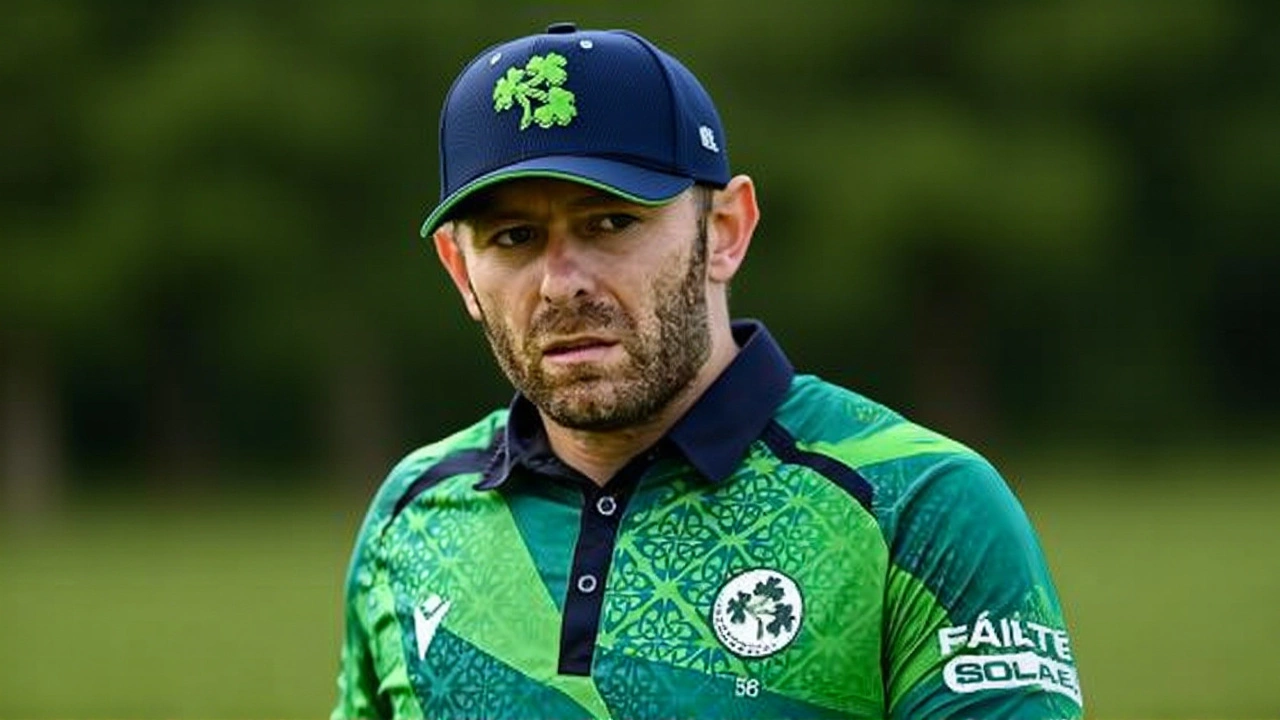On a humid Wednesday evening in Mirpur, Bangladesh won the toss and chose to bat first against Ireland in the second Test of their two-match series — a decision that turned out to be as strategic as it was symbolic. The Shere Bangla National Stadium, with its notoriously spin-friendly pitch, was ready to test patience, technique, and nerve. By stumps on Day One, Bangladesh had reached 292/4 in 90 overs, with Liton Das becoming only the sixth Bangladeshi to cross 3,000 Test runs. It wasn’t just a milestone — it was a statement.
Day One: A Test of Grit and Spin
The morning session belonged to the bowlers. Ireland’s attack, led by the young Matthew Humphreys, came out sharp. But Bangladesh’s top order, often criticized for fragility, held firm. Mominul Haque, the quiet anchor, reached his 23rd Test fifty — 50 runs in 93 balls, no sixes, just discipline. He was dropped on 49 by Paul Stirling, a moment that could’ve changed the game. Instead, it became a turning point.By lunch, Bangladesh were 100/3 — the same score they’d posted after 30 overs. The pressure was mounting, but so was their resolve. The 100-run stand between Mominul and Mushfiqur Rahim (52) stretched over 207 balls — a masterclass in attrition. Tea came at 192/3. Then, the real test began: spin on a wearing track.
Drinks were called at 251/4. The new ball arrived at 261/4. And then, with 83 balls and two wickets to spare, Liton Das and Mushfiqur Rahim added 50 for the fifth wicket. Das, calm as ever, brought up his 3,000th run with a single to mid-off. The crowd rose. The Irish fielders exchanged glances. This wasn’t just a century chase — it was a psychological battle.
What Ireland Saw — And Missed
Ireland’s challenge has always been spin. And this pitch? It’s a spin bowler’s dream. In the first Test, Humphreys took five wickets — yes, five — at an economy of 15.75, proving he can outthink even seasoned batters. But here, on Day One, the Irish attack looked predictable. The two referrals they used — one successful against Shadman Islam, one unsuccessful against Das — told the story. They were reactive, not proactive.“They didn’t adjust their lines,” said one former Irish Test player on social media. “They kept bowling straight, hoping for luck. Against this lineup, you need width, you need variation. You need to make them play.”
And then there’s Paul Stirling. The veteran all-rounder, who dropped Mominul, has been Ireland’s most consistent performer in both Tests. But in Dhaka, even he’s struggling to find rhythm. His 47 in the first innings of the first Test was a lifeline. Here? He’s been quiet. Too quiet.

Why This Match Matters — Beyond the Scoreboard
Bangladesh leads the series 1-0 after dominating the first Test with centuries from Mahmudul Hasan Joy and Najmul Hossain Shanto, backed by the twin spin threat of Taijul Islam and Mehidy Hasan Miraz. Ireland’s response — Campher’s grit, Stirling’s aggression — kept them alive. But now, they need more than hope. They need structure.What’s at stake? Not just the series. It’s credibility. For Bangladesh, this is about proving they can close out a series at home — something they’ve struggled with in recent years. For Ireland, it’s about showing they belong in Test cricket beyond occasional upsets. This pitch doesn’t care about rankings. It cares about technique.
What Comes Next?
Day Two begins with Bangladesh at 292/4. The new ball is due. Ireland’s spinners — Humphreys and Liam McCarthy — will need to strike early. If they can remove Das and Rahim before lunch, they might still have a chance. But if Bangladesh pushes past 350? The pressure shifts. Hard.“It’s not about who plays better cricket,” said commentator Harsha Bhogle on a local radio station. “It’s about who cracks first. And in Dhaka, cracks come slowly — but they come.”
With the weather holding clear and the pitch showing signs of wear, the next two days could be a textbook example of how Test cricket should be played — slow, tense, and utterly gripping.

Background: A Series on the Edge
This is only the second two-Test series between Bangladesh and Ireland. The first, in 2023, ended in a draw — a result that left both sides frustrated. This time, the stakes are higher. Bangladesh has won six of their last eight home Tests. Ireland? They’ve won just one away Test in the last decade — against Zimbabwe in 2019.Their last visit to Dhaka in 2023 ended in a 1-0 loss for Ireland, despite a valiant 89 from Stirling. This time, the pitch is even more demanding. The outfield is slower. The dew is less forgiving. And the spinners? They’re hungrier.
For Bangladesh, the question isn’t whether they can win — it’s whether they can finish the job. For Ireland, it’s whether they can find a way to make history.
Frequently Asked Questions
How did Liton Das reach 3,000 Test runs, and why is it significant for Bangladesh?
Liton Das reached 3,000 Test runs during his innings on Day One of the 2nd Test against Ireland, becoming the sixth Bangladeshi to achieve the milestone. Only Shakib Al Hasan, Mushfiqur Rahim, Tamim Iqbal, Mominul Haque, and Mushfiqur Rahim (again, as he also crossed it earlier) have done so before him. For a team that took 20 years to play its first Test, this milestone underscores the growth of Bangladesh’s batting depth and consistency at the highest level.
Why is the Shere Bangla National Stadium pitch so challenging for visiting teams?
The pitch at Shere Bangla National Stadium is known for deteriorating rapidly after the first day, offering increasing turn and uneven bounce — especially for off-spin and left-arm orthodox bowlers. Teams like Ireland, who rely on pace and flat-track hitting, often struggle to adapt. Since 2020, the average first-innings score here is 286, but the average second-innings score drops to 198 — a clear sign of the pitch’s grip on the game.
What role did Matthew Humphreys play in the first Test, and can he repeat it?
Matthew Humphreys took a five-wicket haul in the first Test, finishing with 5/117 and an economy rate of 15.75 — the best by an Irish spinner in Bangladesh since 2018. His left-arm orthodox spin troubled Bangladesh’s middle order, especially in the second innings. If he can replicate that control and exploit the wear on Day Two, he could be Ireland’s only hope of breaking Bangladesh’s momentum.
Why was Mominul Haque’s drop by Paul Stirling so critical?
Mominul Haque was dropped on 49 by Paul Stirling at slip in the 50.4th over — a straightforward catch that would’ve left Bangladesh at 177/4. Instead, he went on to score 50, anchoring a crucial 100-run partnership with Mushfiqur Rahim. That single error could cost Ireland dearly; Haque has now scored 23 Test fifties, and his ability to occupy the crease is central to Bangladesh’s strategy. In Test cricket, such chances rarely come twice.
What’s the historical context of Bangladesh vs. Ireland in Test cricket?
Bangladesh and Ireland have played only three Test matches against each other — all since 2023. Bangladesh leads the head-to-head 2-0, with one draw. Ireland’s only win in Tests came against Zimbabwe in 2019, and their away record against full-member nations remains poor. This series is a chance to change that narrative — but the odds, especially in Dhaka, are stacked against them.
Who has the upper hand heading into Day Two?
Bangladesh has the upper hand — not just in score, but in momentum and conditions. They’ve batted well, the pitch is favoring them, and Ireland’s spinners haven’t yet found their rhythm. If Bangladesh can post 380+, Ireland will need a miracle. But if they collapse early, the Irish bowlers still have the tools to strike. The next 100 overs will decide whether this becomes a coronation — or a comeback.






